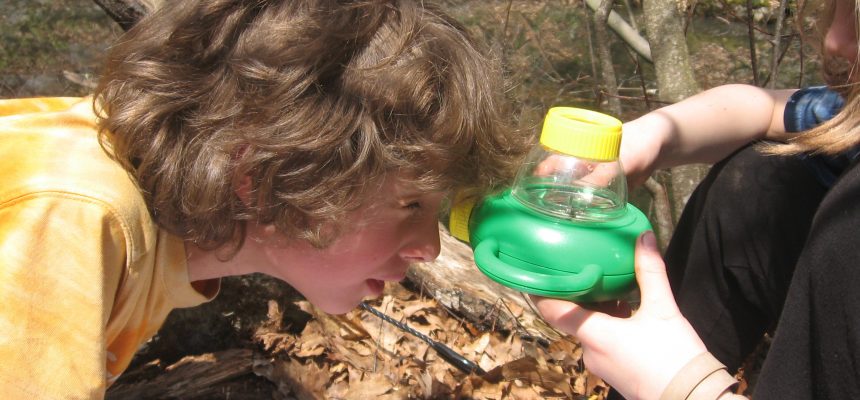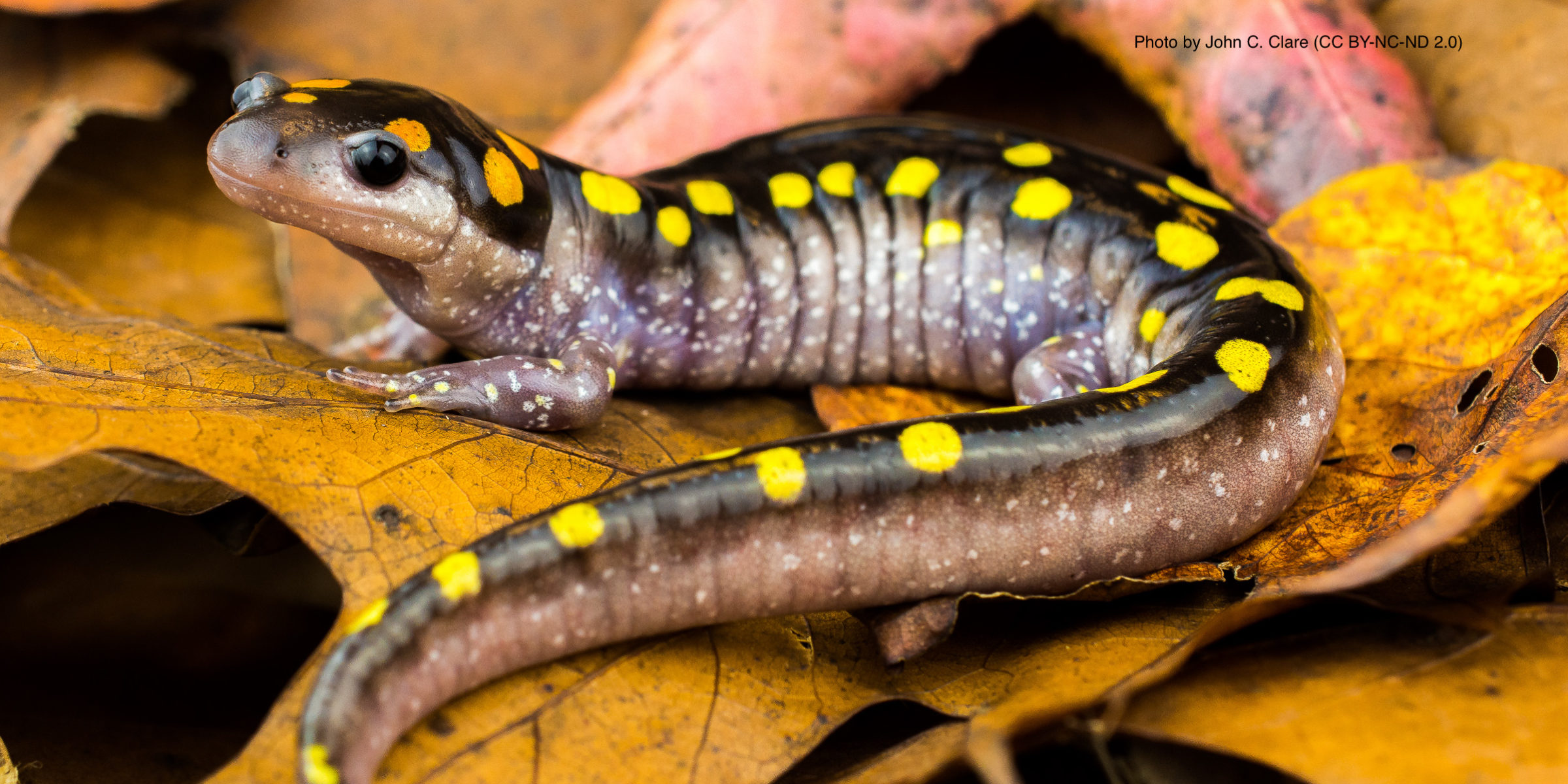
Surviving in an Ecosystem
An abundance of aquatic environments in our region provide a hands-on opportunity for students to learn about how the adaptations of a particular organism make it well-suited to a unique environment. Choose between a Vernal Pool or a Stream Study program, or combine the two for a more comprehensive understanding as students compare and contrast the habitats and their inhabitants.
- Vernal Pool Intro Length: 1 hour
There is no better place than a vernal pool to witness the dynamic nature and resilient inhabitants of an ecosystem. As the physical characteristics of this habitat change with each season, so does the availability of resources. Only a select group of specially-adapted organisms can survive and reproduce here. Prior to visiting the vernal pool students are introduced to this ecosystem, as well as the organisms that live there, through an interactive slide show where students collect data in preparation for the actual field work they will be doing on site.
Spring – In classroom
NGSS: LS1.B, LS2.C, LS4.C, LS2.D, LS4.D - Vernal Pool Field Research Length: 2 hours
Well-versed in the features and organisms of this unique system, students venture into the woods, and roll up their sleeves as they use nets, magnifiers, and field guides to collect a variety of organisms for observation and for identification.
Spring – Outdoors at vernal pool
NGSS: LS1.B, LS2.C, LS4.C, LS2.D, LS4.D - Stream Study Intro Length: 1 hour
Streams crisscross through a variety of habitats; some roaring through, while others meander. It takes a unique set of skills and adaptations to survive in a lotic environment. Prior to visiting a stream students are introduced to this ecosystem, as well as the organisms that live there, through an interactive slide show where students collect data in preparation for the actual field work they will be doing on site.
Spring – In classroom
NGSS: LS1.B, LS2.C, LS4.C, LS2.D, LS4.D - Stream Study Field Research Length: 2 hours
Well-versed in the features and organisms of this unique system, students don their wellies and explore the scores of macro invertebrates that inhabit our cool running streams.
Spring – Outdoors at stream
NGSS: LS1.B, LS2.C, LS4.C, LS2.D, LS4.D - Vernal Pool & Stream Study Combo Length: 5 hours (can be all one day, or several days)
Provide your students with the opportunity to gain a deeper understanding of the relationship between the biotic and abiotic features of an ecosystem as they compare the features of two different aquatic environments and the organisms that live there.
Spring – In classroom and at a vernal pool and a stream
NGSS: LS1.B, LS2.C, LS4.C, LS2.D, LS4.D
Adaptations and the Nature of Selection
Choose from an array of lessons to help your students understand traits, variation and natural selection. Combine in-class and outdoor programs that teach observation skills and build connections between physical characteristics and habitats.
- Introduction to Birds Length: 1 hour
Students are introduced to bird features and behaviors as they begin recording observations of birds in motion in their Bird Journals.
Any time of year – In classroom
NGSS: LS3.A, LS3.B, LS4.C - Comparing Habitats Length: 1 hour
In a guided small group activity students will closely observe photos of the main habitat types found in Vermont. Students will identify key features of each habitat type that will inform a study of Vermont birds, including adaptations various birds have that help them to survive in a given habitat.
Any time of year – In classroom
NGSS: LS3.A, LS3.B, LS4.C - Bird Adaptations & Habitat Hike Length: 2 hours
Through a slideshow, students make observations of physical characteristics of birds in specific habitats in order to make and support claims as to whether a species migrates or stays active in Vermont through the winter. To bring the scenarios to life, students then work in small groups collecting evidence of the habitat needs of one of our local forest or meadow birds.
Any time of year – In classroom & Outdoors
NGSS: LS3.A, LS3.B, LS4.C - Bird Hike Length: 2 hours
Students visit different habitats and draw on their observation skills and understanding of habitat features to model bird behaviors through games and activities.
Any time of year – Outdoors
NGSS: LS3.A, LS3.B, LS4.C
